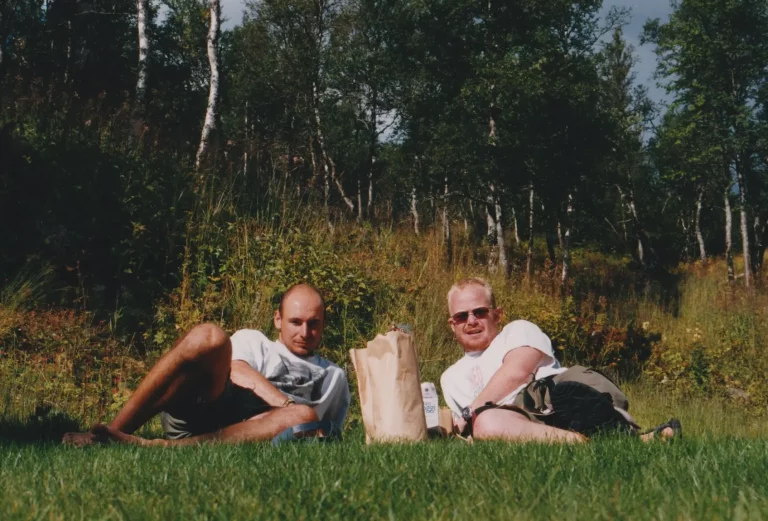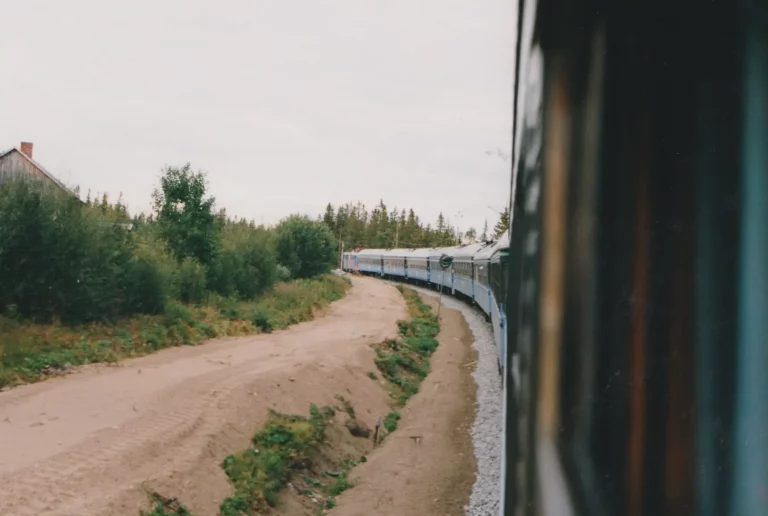On the souther part of the Kungsleden trail from Grövelsjön to Storlien
In August 1999, my friend Dieter and I moved to Scandinavia to the Swedish Fjäll – the plateau between Norway and Sweden.
In 11 stages it goes 184km through the Swedish wilderness from Grövelsjön to Storlien.
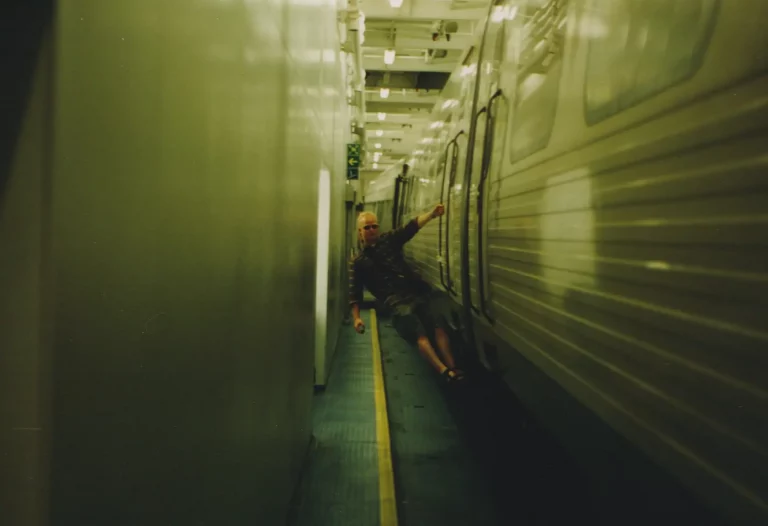
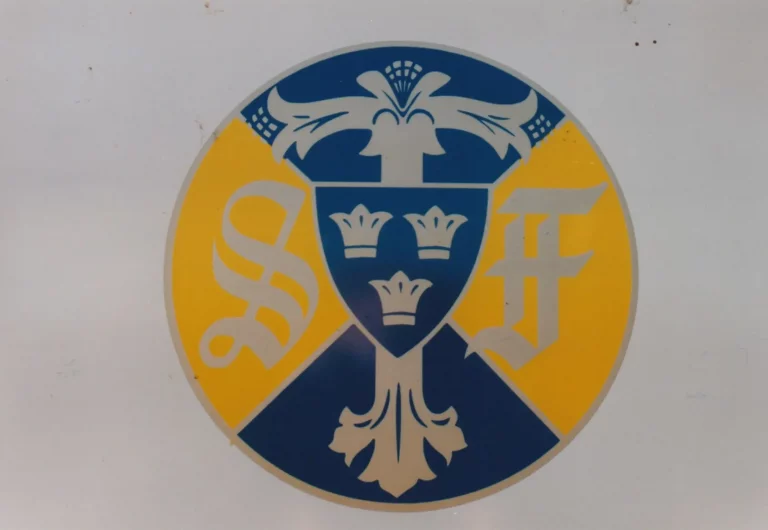
The journey starts at the train station in Sontheim to get to Sweden via Ulm with the EC via the Vogelfluglinie by ferry.
In Malmö we change trains and from there take the “wooden class” of the Swedish Railways via Mora to Idre.
From there we take the bus to Grövelsjön, the starting point of our tour, in the early evening.
The route takes more than a day and the journey in wooden class is not very pleasant as the benches are actually still made of wood.
We are already “looking forward” to the trip home.
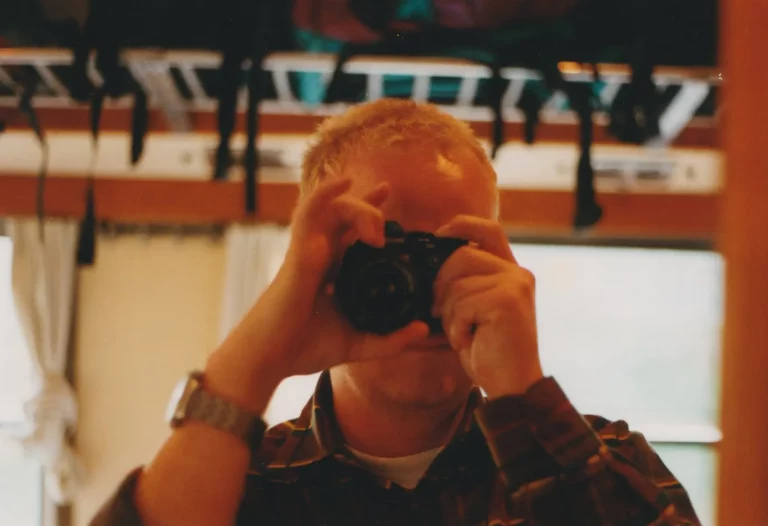
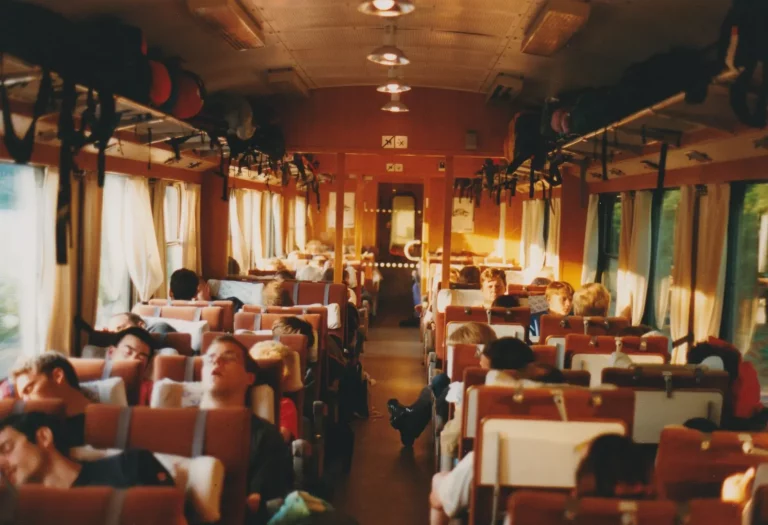
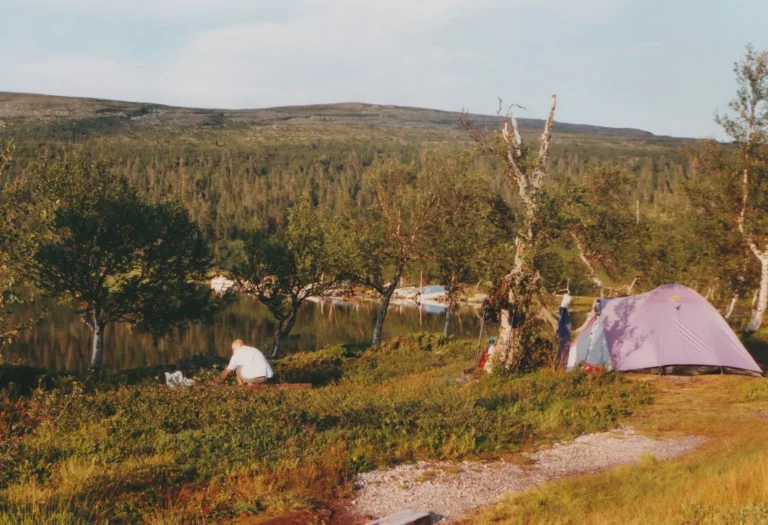
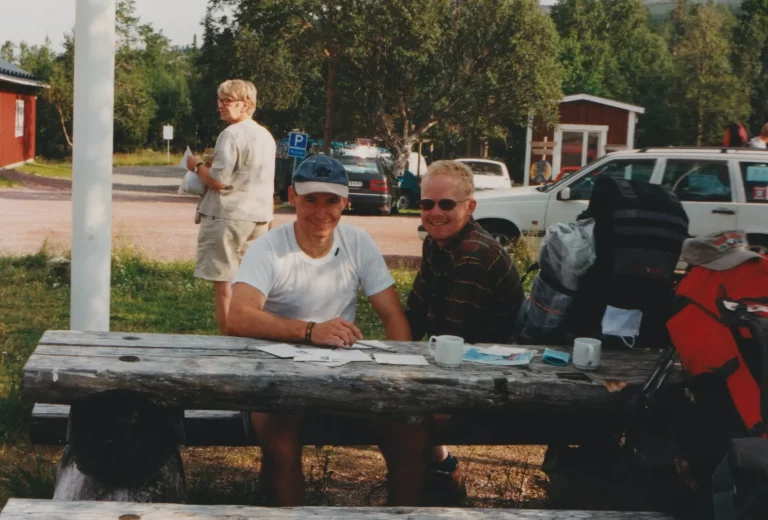
We spend the first night in the tent on the Sjöstugan in the beautiful evening sun.
The next morning we set off after a coffee and studying our mountain map.
The first stage begins with a climb to the “Langfjället” where there are several moors.
The paths there are equipped with wooden paths to protect nature from destruction and shoes from getting wet.
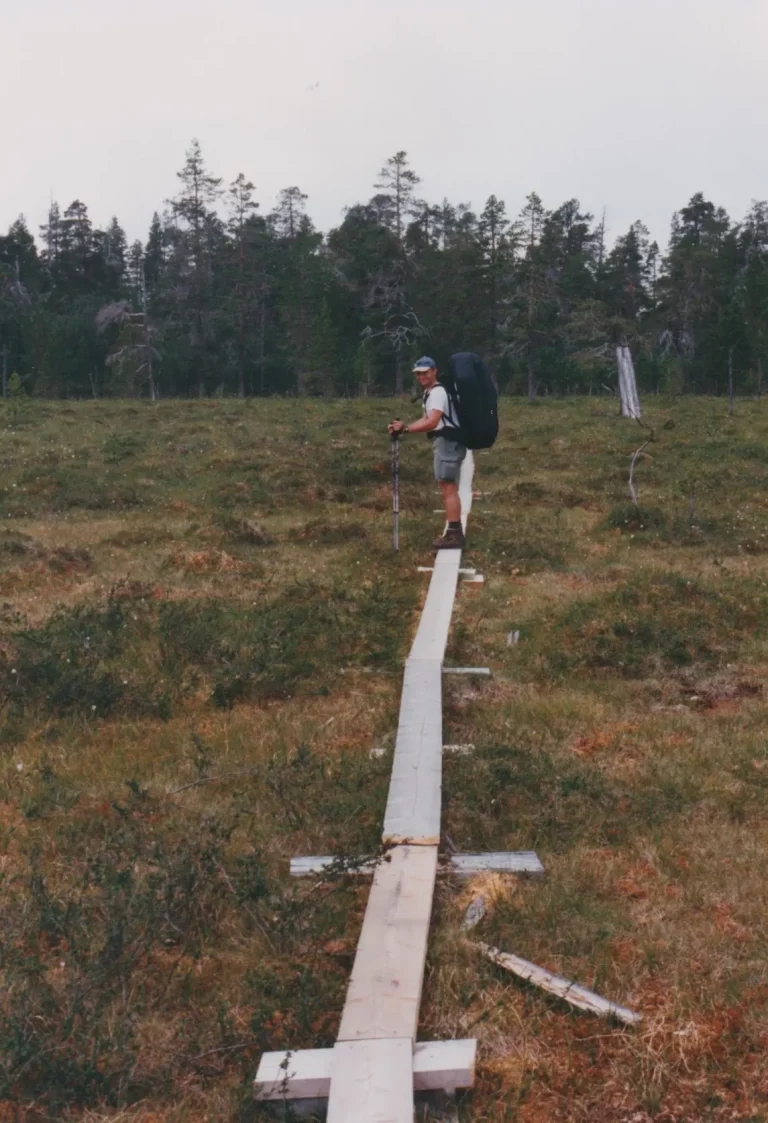
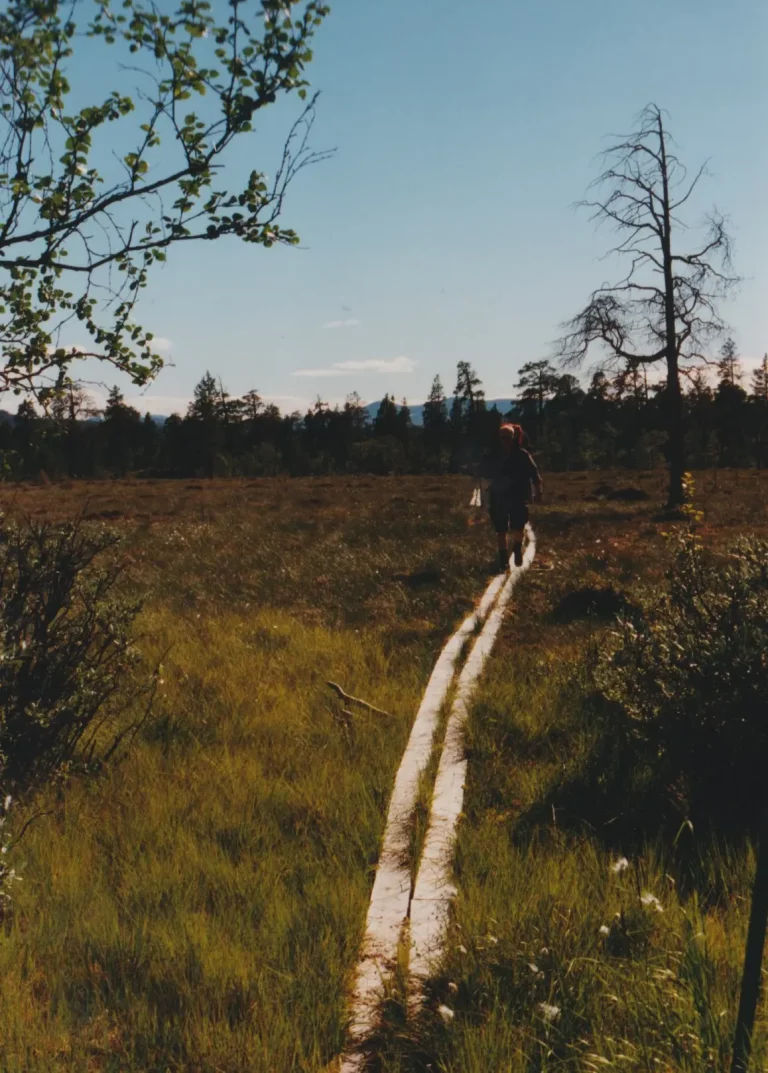
The weather is very good and we take our hike slowly.
Our attention is immediately drawn to the different types and colors of mosses that exist in this moorland.
We take several breaks and enjoy the sun.
The path takes us 15km across the plateau to Lake Hävlingen.
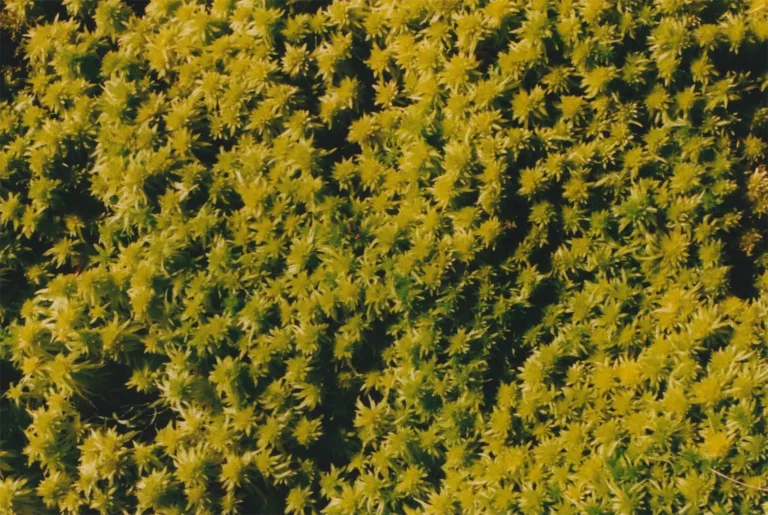
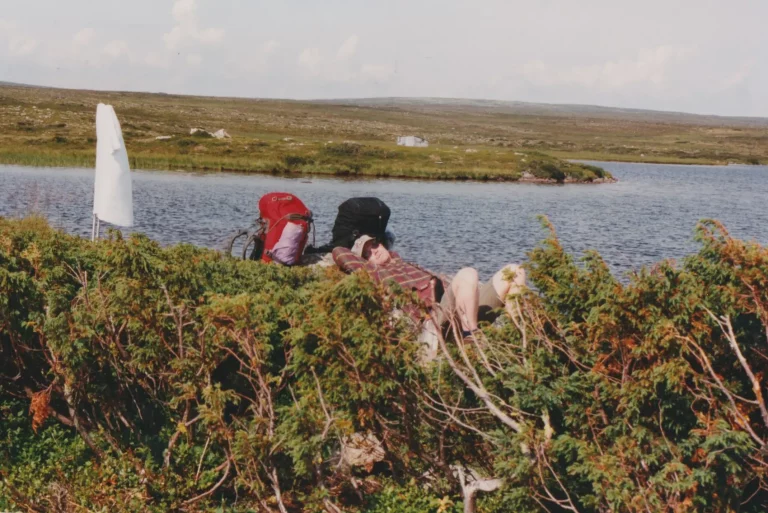
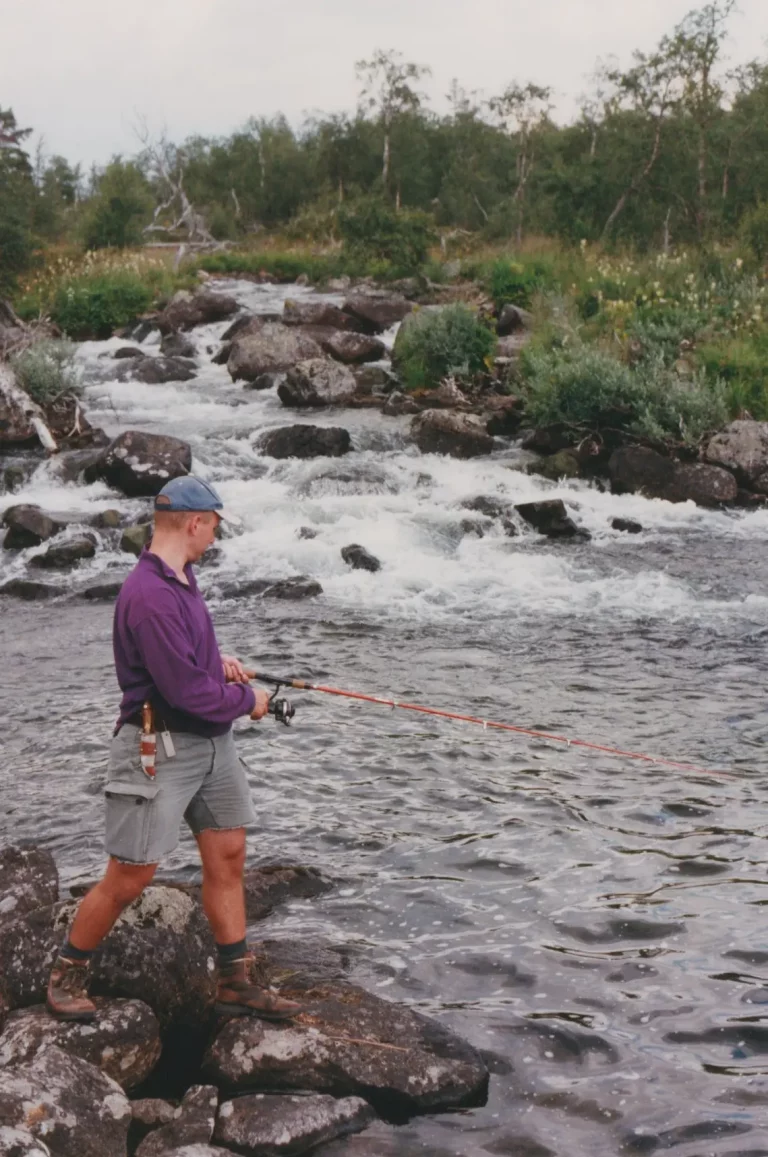
We pitch our tent for the night at the transition between lakes Hävlingen and Sarsjön.
We try our luck at fishing and catch a small trout which we prepare as a starter.
We end the day around the campfire.
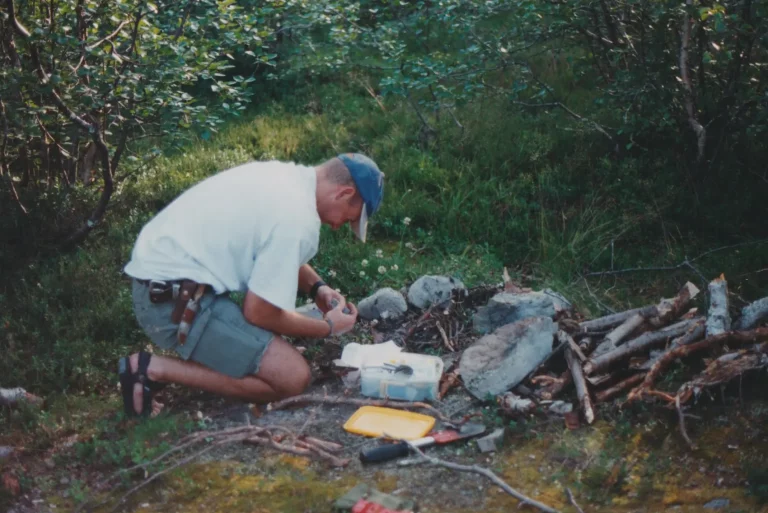
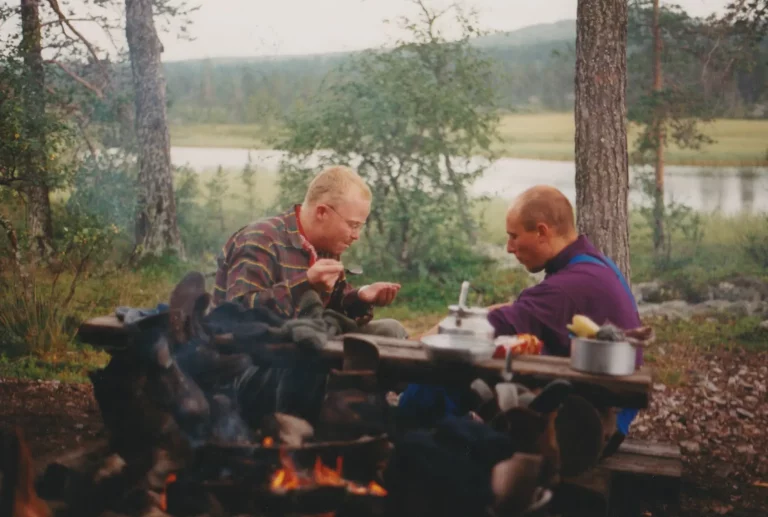
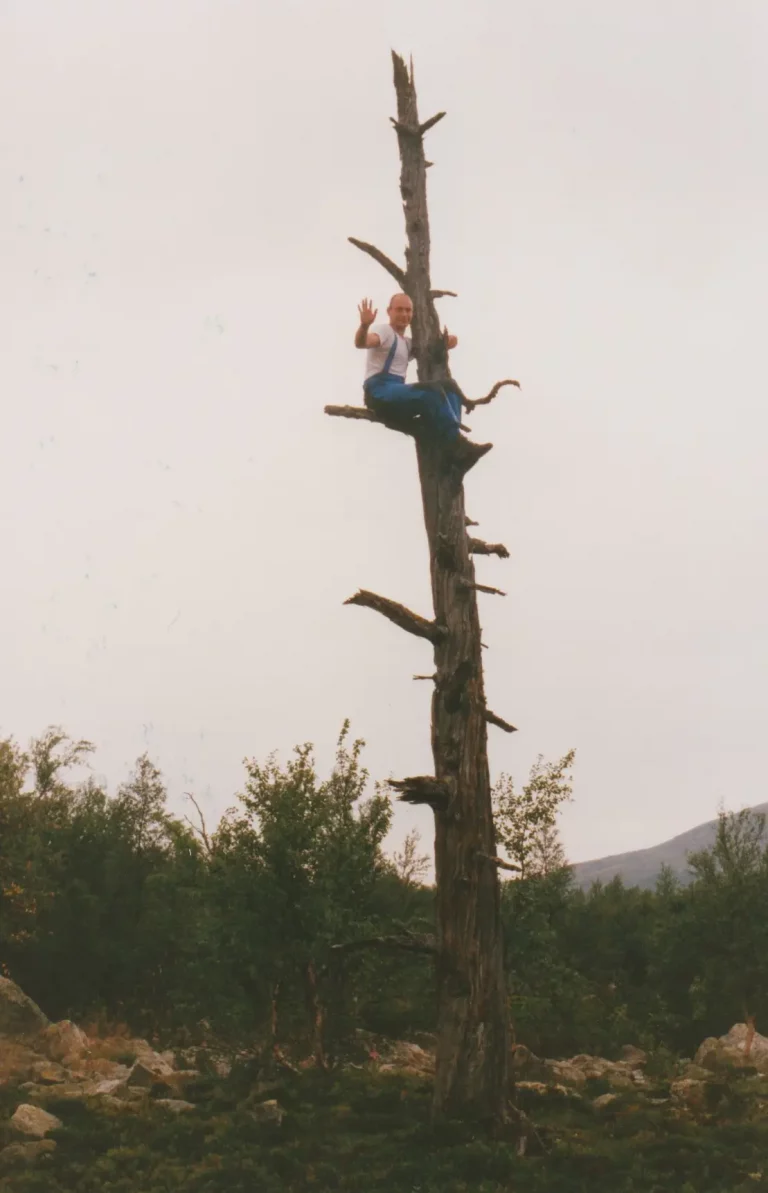
The second stage takes us in initially foggy conditions across Lake Slagusjön to Lake Rogen.
The Slagusjön is on a plateau, which again means a climb.
In order to find out the way forward, you sometimes have to climb a dead tree and hope that the branches hold.
When the sun comes out, the roe shows itself in all its glory – a beautiful view of the Swedish wilderness.
We pitch our tent after 12km directly at the southern tip of the Rogen.
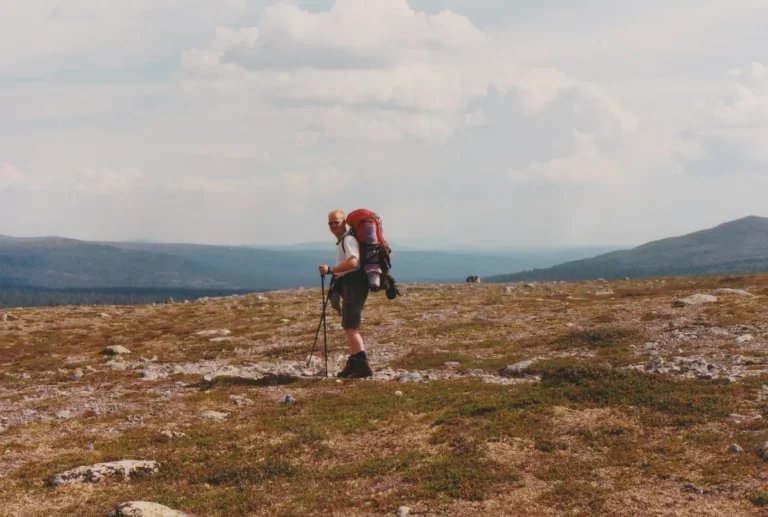
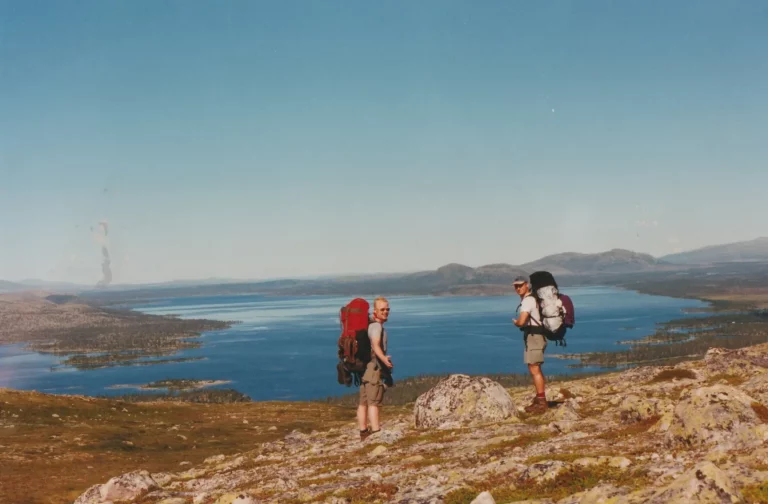
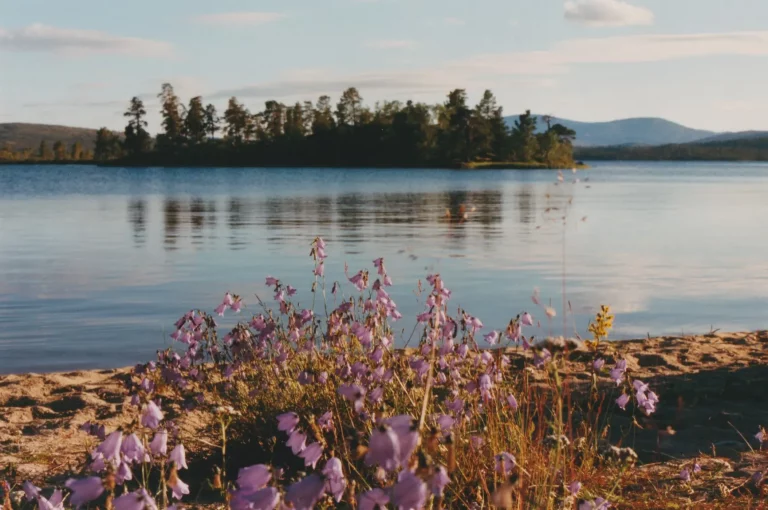
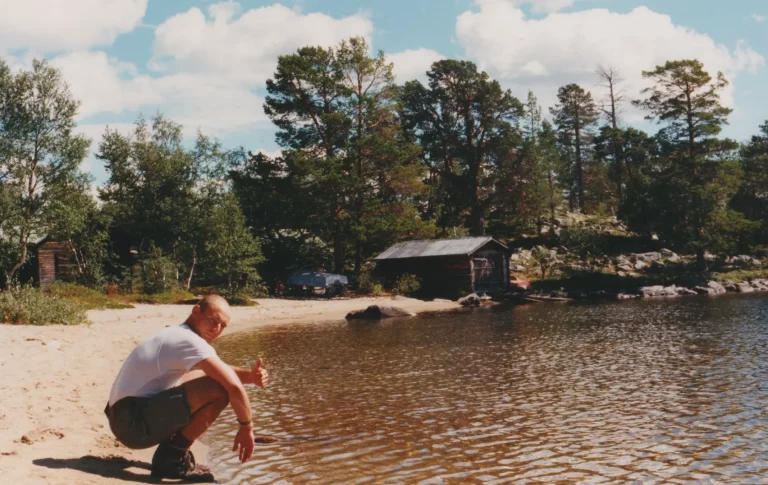
Our third stage goes along the north bank of the Rogen.
The weather is like in a picture book and when we discover a sandy beach near the Rogenstugan after 10km, it is clear to us that we will no longer go any further, but rather set up our tent here.
We have therefore not reached our planned milestone and we are aware that we will have to run the missed kilometers in the coming days.
But it’s not possible for us not to spend the night on such a beautiful sandy beach.
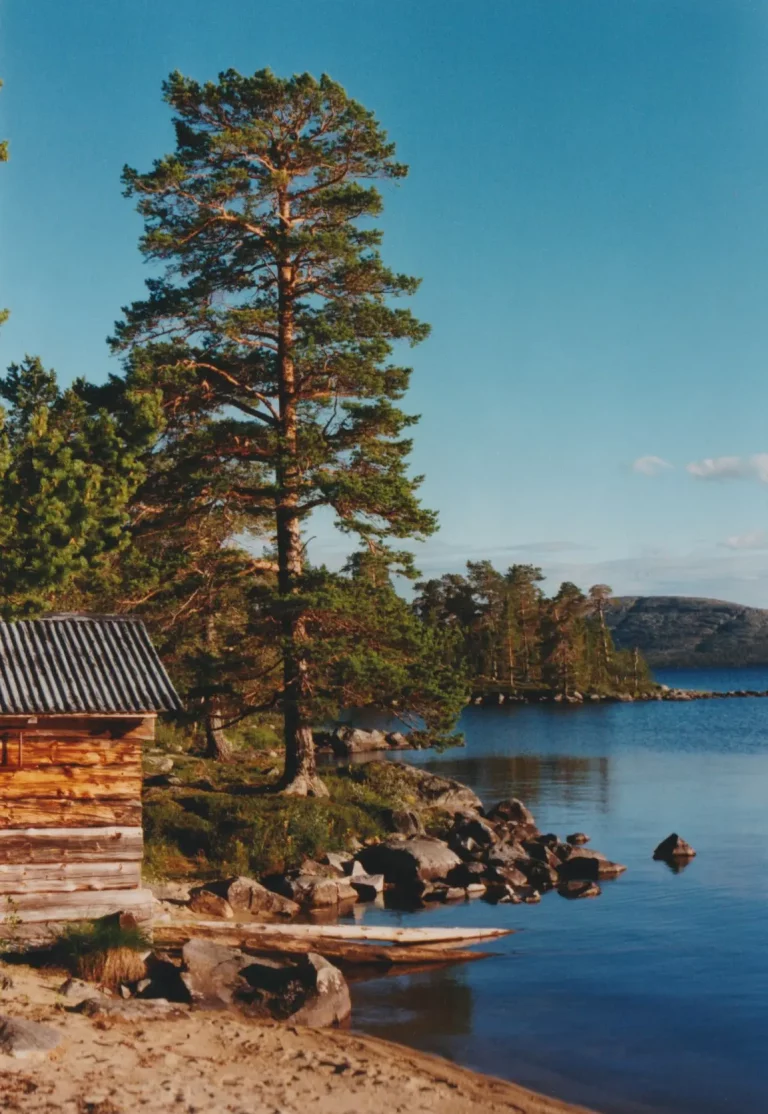
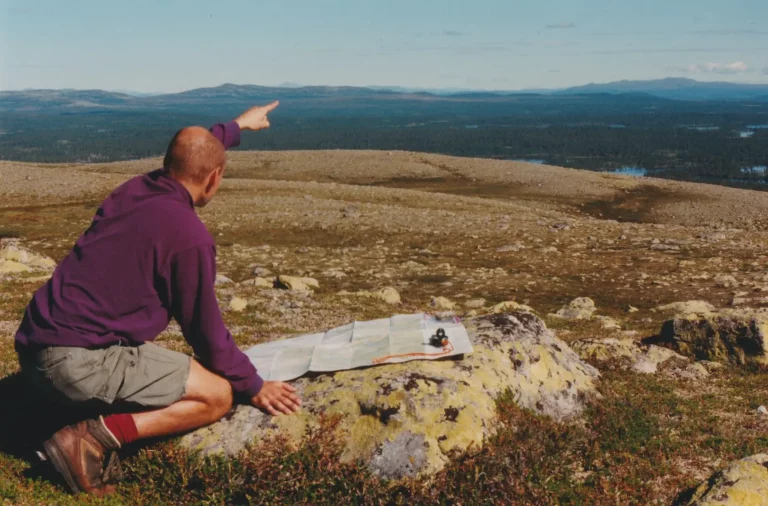
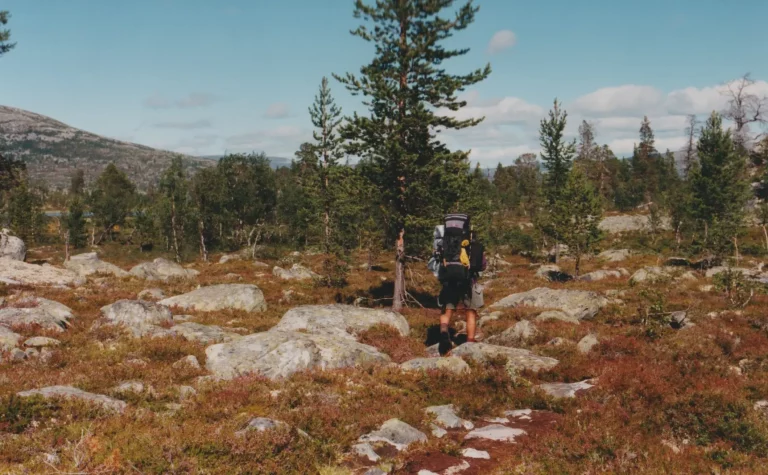
The fourth stage leads north of Rogen around the Bustvalen mountain and over the Skedbrotstugan to Lake Dalstenshan.
On the plateau near Skedbrotstugan you can already see the Helags massif on the horizon. We want to be there in a few days.
A few longer breaks and 21km later we set up our tent on the eastern bank of the Dalstenshan.
Thanks to our aquavit, the troubles of this longer stage are quickly forgotten after a few sips.
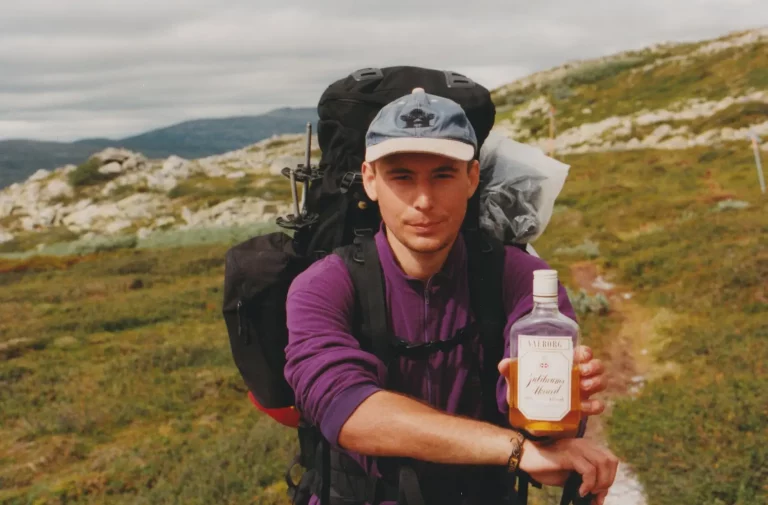
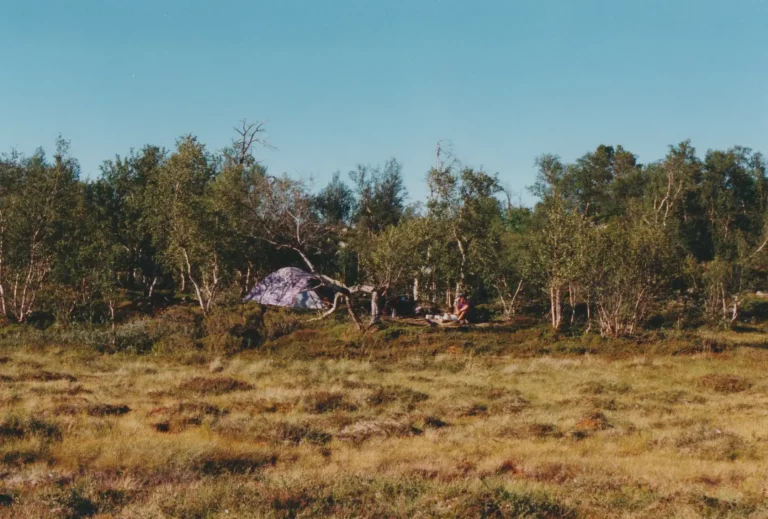
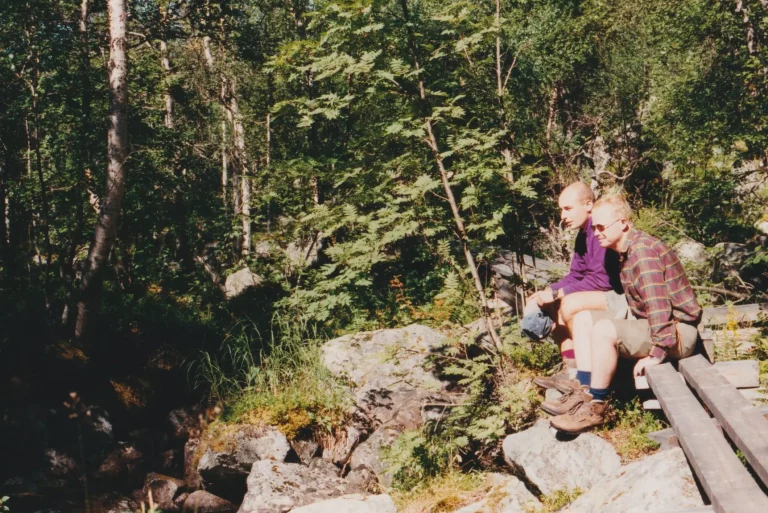
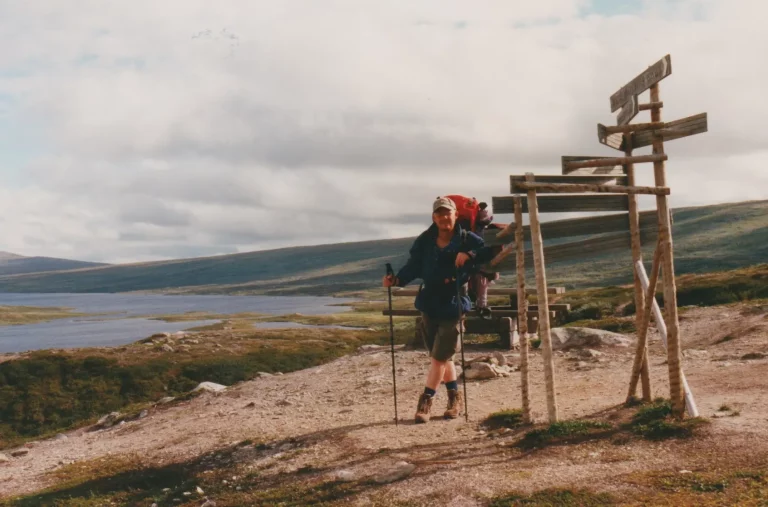
The fifth stage will be long and, as it turns out, painful, because we have to make up for the kilometers we missed on the third stage.
So we set Fjällnäs as our destination for the day.
After a long 26km and an ascent and a descent of almost 400m each, we finally reach Fjällnäs.
Dieter’s Achilles tendon is becoming painfully noticeable and continuing to hike the next day would probably only be possible with pain.
So we decide to book a cabin in Fjällnäs for two nights and take a day off. We spend the day in Fjällnäs relaxing with a few cans of beer on the veranda of our cabin.
In the evening we were very lucky to be served a delicious reindeer steak with garlic bread and a glass of wine in the local restaurant. This gives us the energy we need for the next stage.
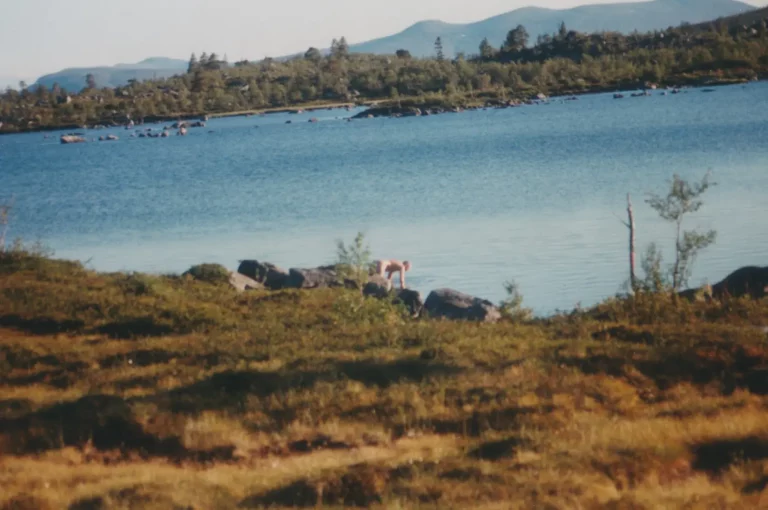
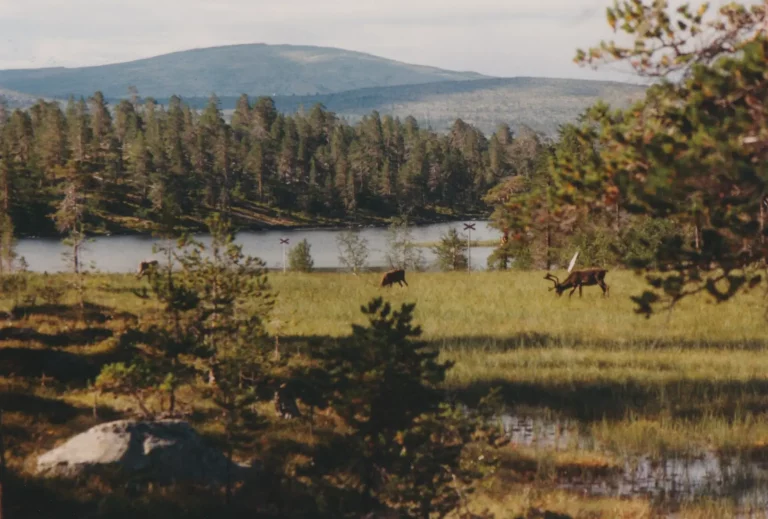
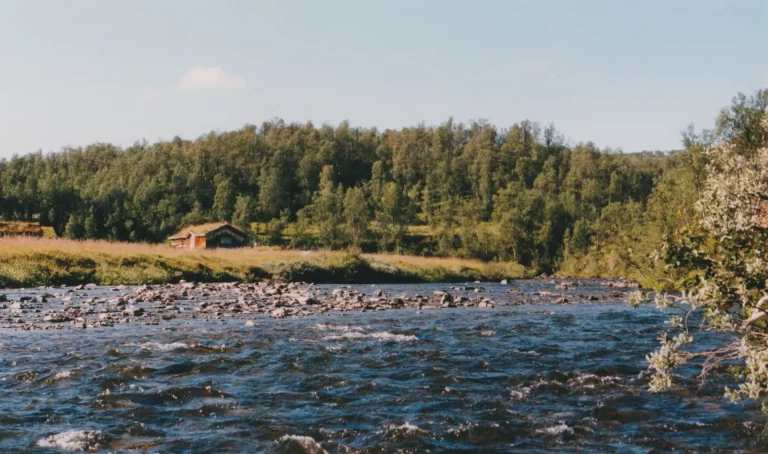
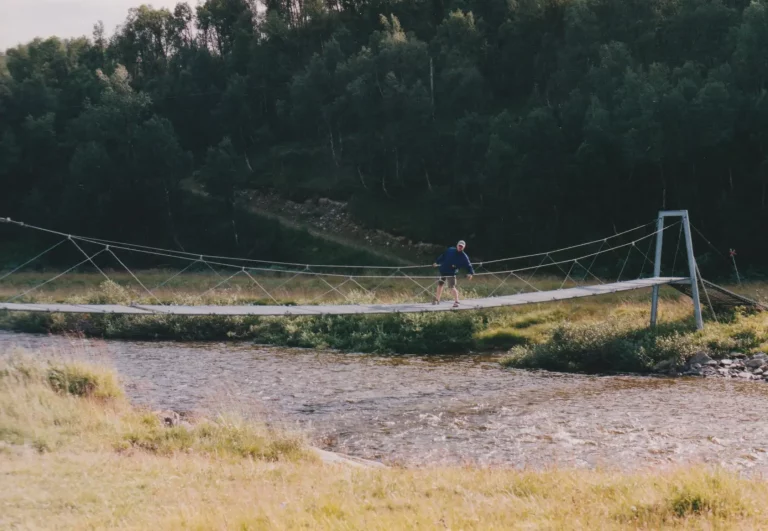
The sixth stage leads over the Langbrottfjället plateau to Klinken.
After 18km across the plateau, it goes 330m down to the Ljusnan river plain, which rises nearby in the fells and flows into the Gulf of Botnia after 440km.
At the Klinken we cross the Ljusnan via a suspension bridge and shortly afterwards we set up our tent at a hut.
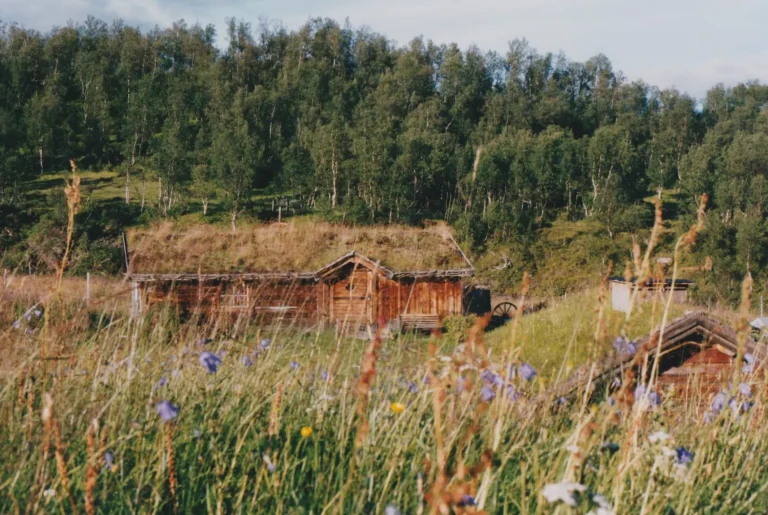
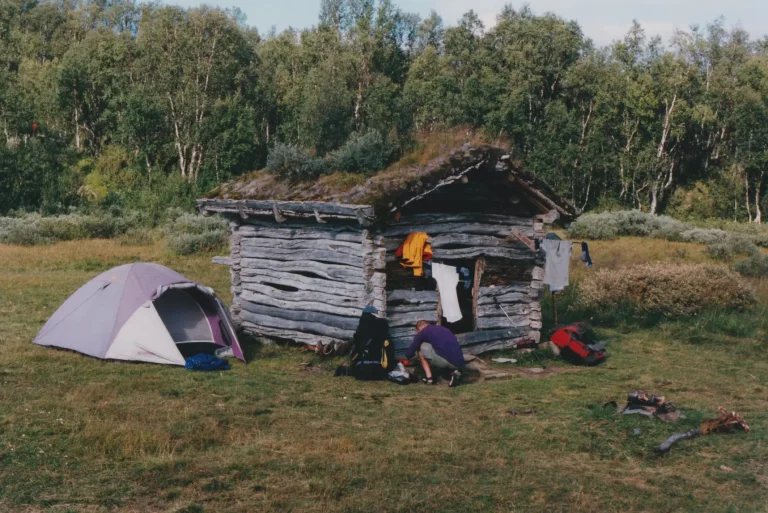
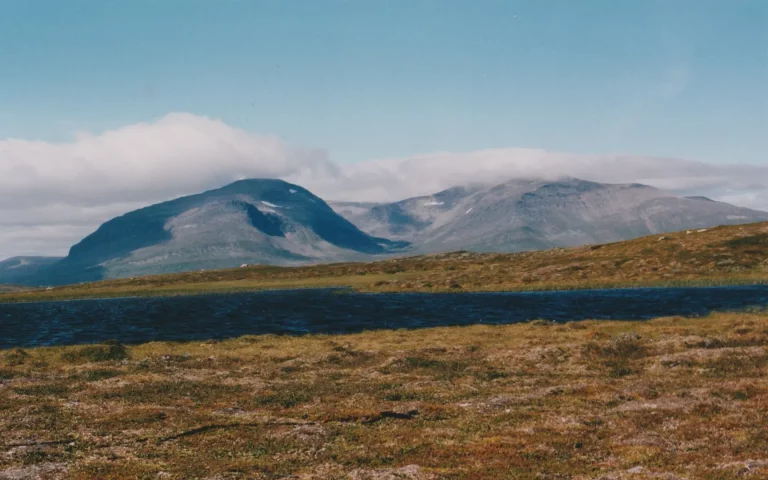
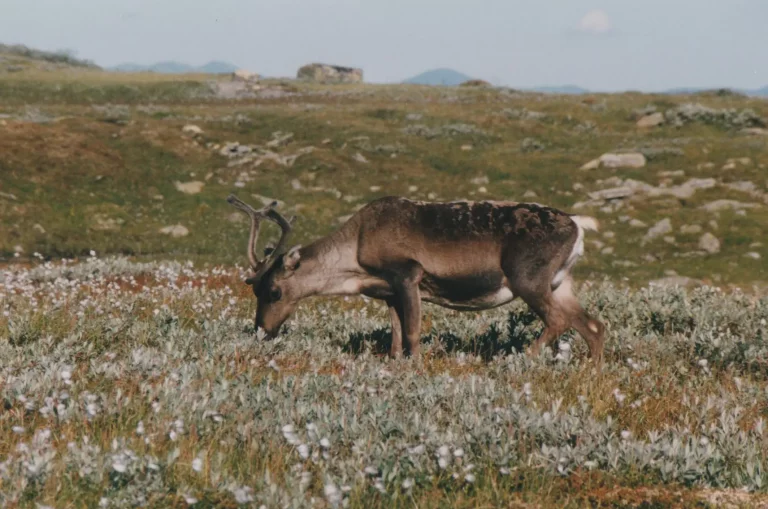
The seventh stage leads over an extensive plateau, which we cross over two days.
First we go 400m up to the plateau, where meadows are covered with cotton grass.
A few reindeer also graze there and they don’t let us disturb them.
We hike past the Fältjägarstugan and after 16km we pitch our tent at a place with a beautiful view.
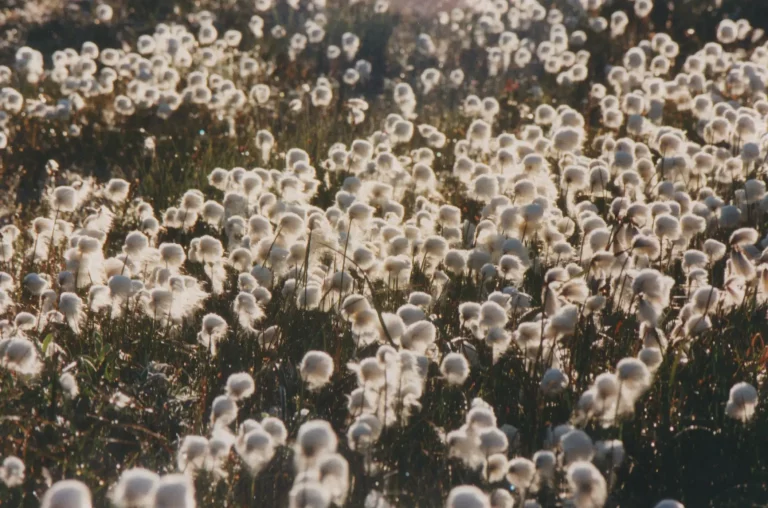
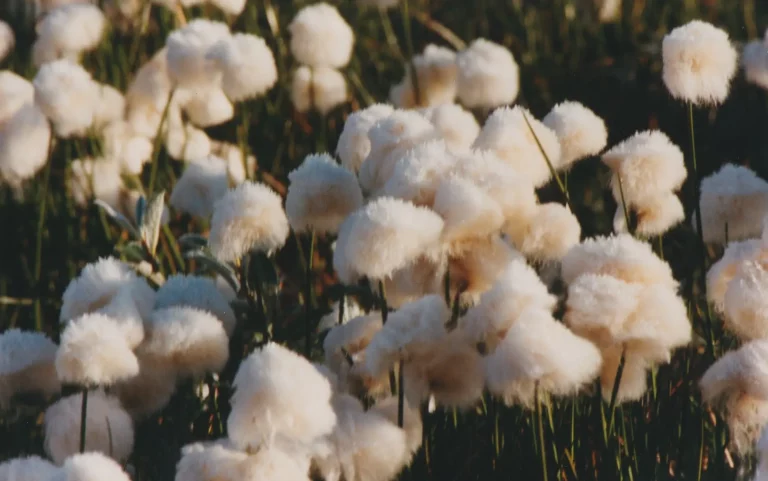
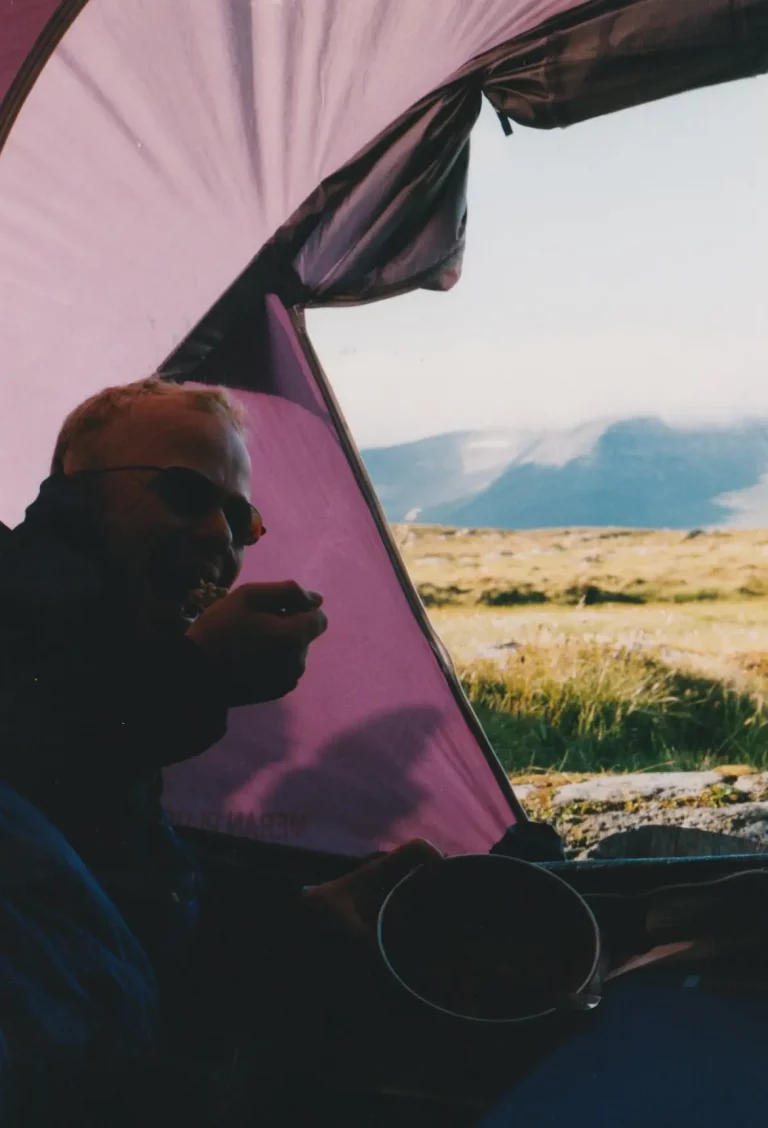
At night we are woken up by animal noises.
When we look out of our tent to clarify the situation, we notice that a herd of reindeer has surrounded us.
Apparently they don’t care about us because when we wake up in the morning they have already moved on.
In the morning there is a wonderful view from the tent of the original nature of the fells.
After the usual breakfast and a bit of personal hygiene, our eighth stage continues over this plateau to the Helgas massif.
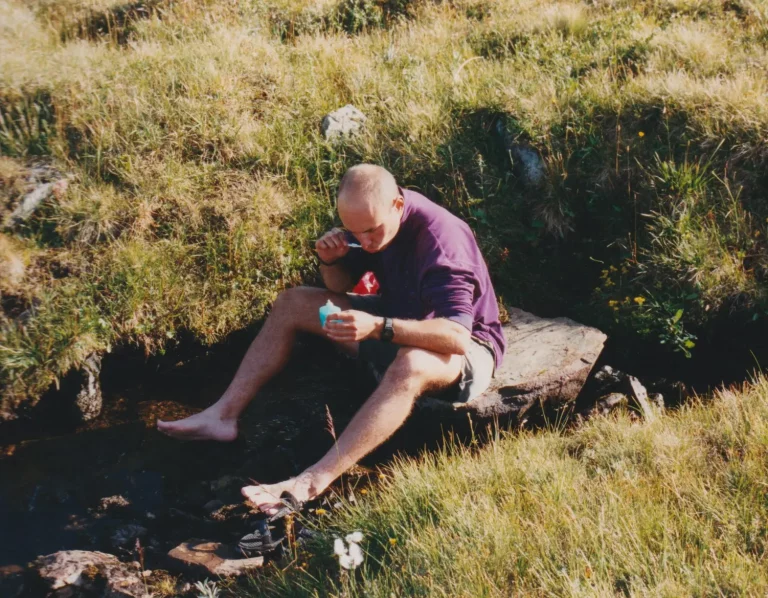
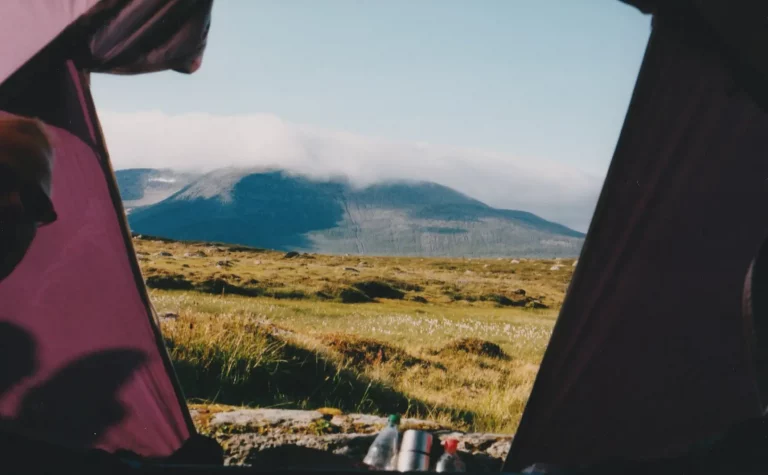
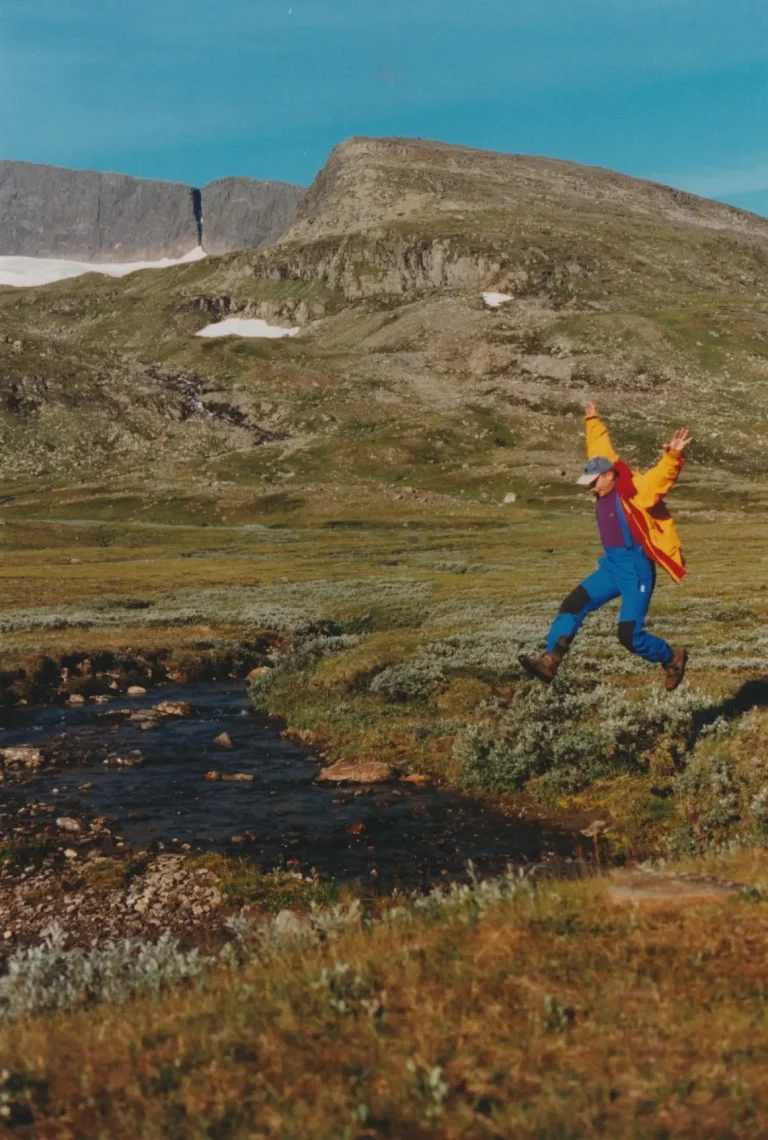
The eighth stage ends after 11km at the Helags glacier.
We are very happy about reaching this mountain because we have been keeping an eye on it for the past 5 days.
At the foot of the Helags there is also a fell station with a sauna, which we use extensively in the evening.
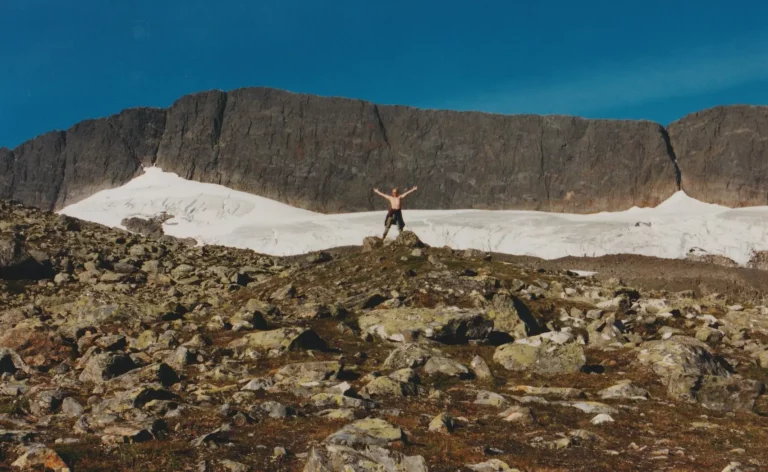
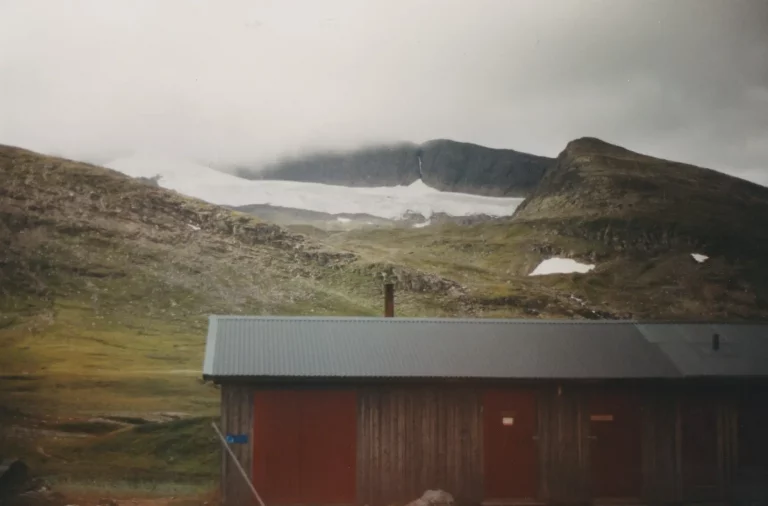
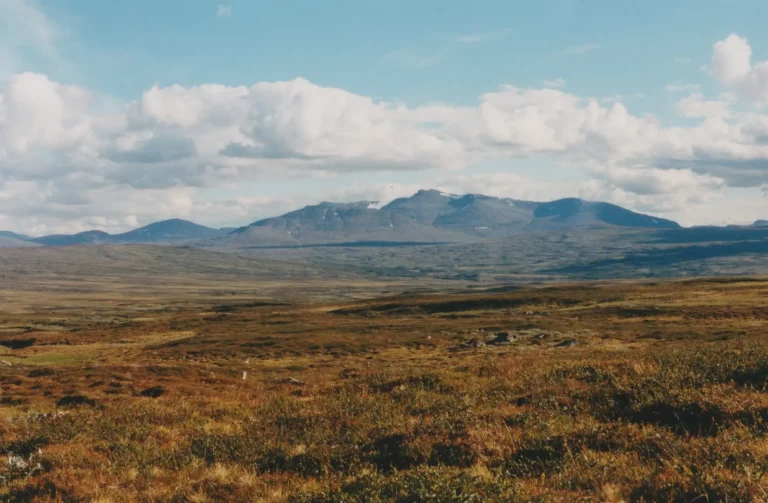
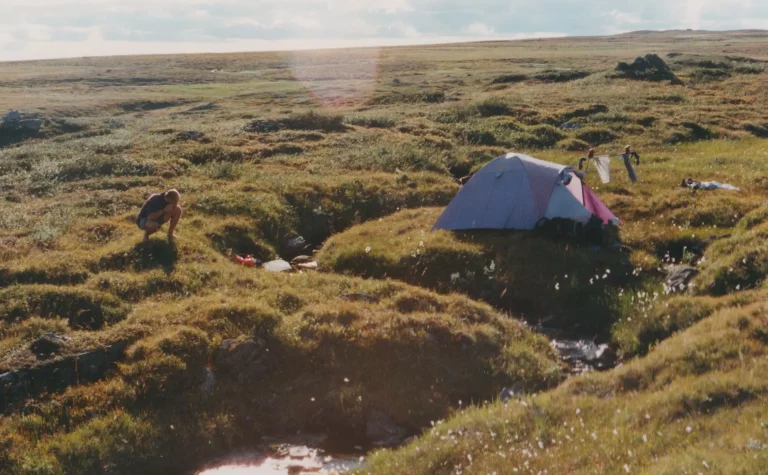
The ninth stage takes us 16km over flat and unvegetated terrain to just before the Sylarna massif.
The weather has been very consistent so far and we have been spared any heavy and prolonged rain.
Our tenth stage goes through the beautiful Sylarna massif.
After 18km we pitch our tent in the wilderness for the last time just before Blahammarens Fjällstation.
We enjoy the sunset before we set off on our last leg.
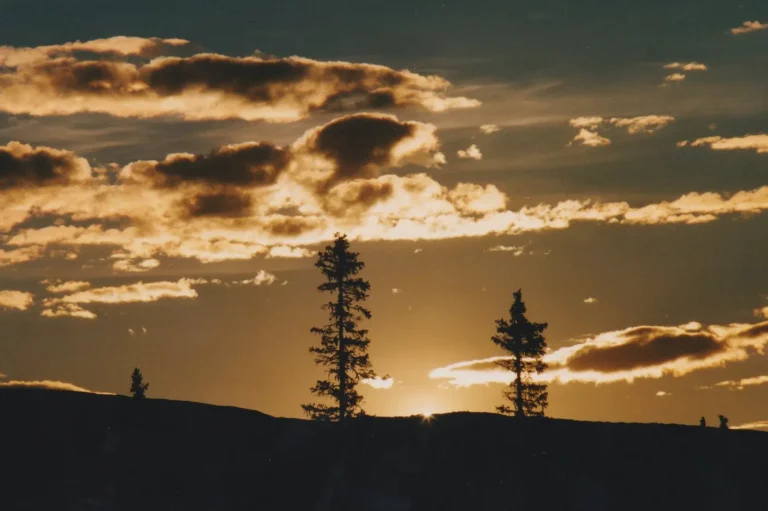
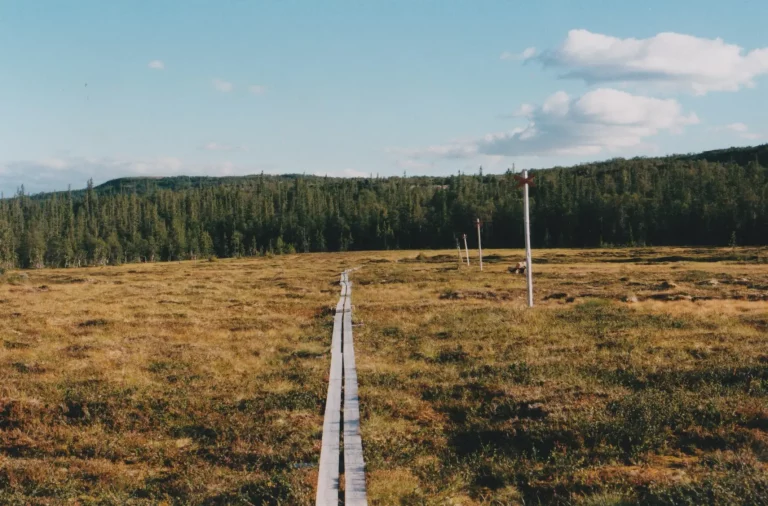
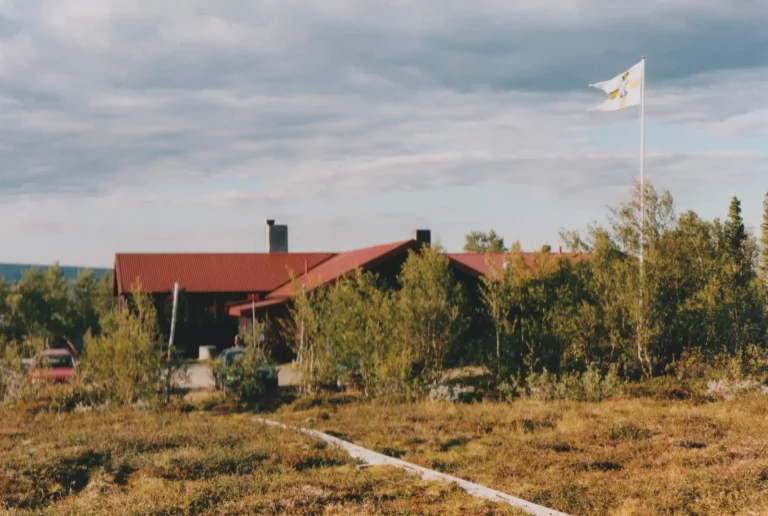
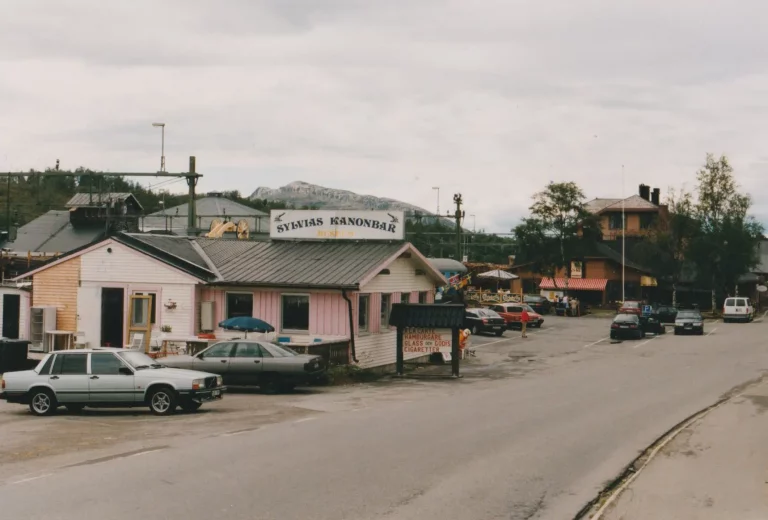
The eleventh and final stage ends after 20km in the town of Storlien.
The wild trail of the Kungsleden ends after 16km in Storvallen and the remaining 4km along the road to Storlien is a piece of cake.
After a few snacks in Sylvia’s Canonbar, we spend the night in our tent again and then start our return trip in the Swedish “wooden class” the next day.
Another little railway odyssey later, we arrived safely back in Swabia a day later.
